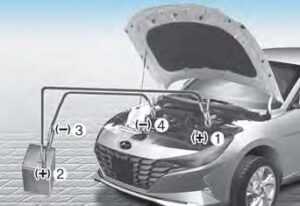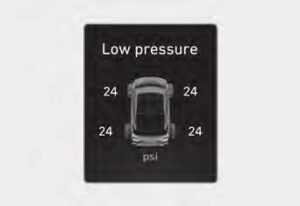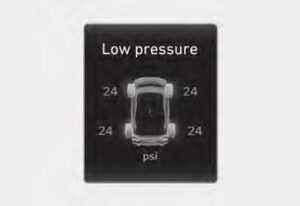 2023 Hyundai Elantra Jump Starting and (TPMS) User Guide
2023 Hyundai Elantra Jump Starting and (TPMS) User Guide
The Hyundai Elantra 2023 is a popular compact sedan that offers a variety of advanced features and technologies to enhance the driving experience. Two important features are its jump starting capabilities and 2023 Hyundai Elantra tire pressure monitoring system (TPMS).
2023 Hyundai Elantra Specs, Price, Features And Milage
In the event of a dead battery, the Elantra 2023 can be jump-started using another vehicle and a set of jumper cables. However, the Elantra 2023 does not have a built-in jump starter. It is important to follow proper safety procedures and instructions in the owner’s manual when jump-starting the vehicle.
The Elantra 2023 is also equipped with a TPMS that uses sensors in the tire valve stems to monitor the tire pressure. If the pressure in any of the tires drops below a certain level, the system will alert the driver with a warning light on the dashboard. Proper tire pressure Hyundai Elantra 2023 is important for both safety and fuel efficiency, so it is recommended to check the tire pressure at least once a month and before long trips.
Overall, the Elantra 2023 offers reliable jump starting and tire pressure monitoring capabilities to help keep drivers safe and informed on the road.
Jump Starting
Jump starting can be dangerous if done incorrectly. Follow the jump-starting procedure in this section to avoid serious injury or damage to your vehicle. If in doubt about how to properly jump start your vehicle, have a service technician or towing service do it for you.
WARNING
To prevent SERIOUS INJURY or DEATH to you or bystanders, always follow these precautions when working near or handling the battery:
- Always read and follow instructions carefully when handling a battery.
- Wear eye protection designed to protect the eyes from acid splashes.
- Keep all flames, sparks, or smoking materials away from the battery.
- Hydrogen is always present in battery cells, is highly combustible, and may explode if ignited.
- Keep batteries out of reach of children.
- Batteries contain sulfuric acid which is highly corrosive. Do not allow acid to contact your eyes, skin or clothing.
If acid gets into your eyes, flush your eyes with clean water for at least 15 minutes and get immediate medical attention. If acid gets on your skin, thoroughly wash the area. If you feel pain or a burning sensation, get medical attention immediately. - When lifting a plastic-cased battery, excessive pressure on the case may cause battery acid to leak. Lift with a battery carrier or with your hands on opposite corners.
- Do not attempt to jump start your vehicle if your battery is frozen.
- NEVER attempt to recharge the battery when the vehicle’s battery cables are connected to the battery.
- The electrical ignition system works with high voltage. NEVER touch these components with the engine running or when the ignition switch is in the ON position.
Information
An inappropriately disposed battery can be harmful to the environment and human health. Dispose of the battery according to your local law(s) or regulations.
NOTICE
To prevent damage to your vehicle:
- Only use a 12-volt power supply (battery or jumper system) to jump-start your vehicle.
- Do not attempt to jump-start your vehicle by push-starting.
Jump starting procedure
- Position the vehicles close enough that the jumper cables will reach, but do not allow the vehicles to touch.
- Avoid fans or any moving parts in the engine compartment at all times, even when the vehicles are turned off.
- Turn off all electrical devices such as radios, lights, air conditioning, etc. Put the vehicle in P (Park), and set the parking brakes. Turn both vehicles OFF.
CAUTION
Before jump-starting, make sure to correctly identify the positive (+) and negative (-) terminals to avoid reverse polarity connections.

- Connect the jumper cables in
the exact sequence shown in the illustration. First connect one jumper cable to the red, positive (+) jumper terminal of your vehicle (1). - Connect the other end of the jumper cable to the red, positive (+) battery/jumper terminal of the assisting vehicle (2).
- Connect the second jumper cable to the black, negative (-) battery/jumper terminal of the assisting vehicle (3).
- Connect the other end of the second jumper cable to the black, negative (-) chassis ground of your vehicle (4).
- Do not allow the jumper cables to contact anything except the correct battery or jumper terminals or the correct ground. Do not lean over the battery when making connections.
WARNING
Do not connect the jumper cable to the negative (-) jumper terminal of the discharged battery. A spark could cause the battery to explode and lead to a personal injury or vehicle damage. - Operate your vehicle for at least 30 minutes of driving or at least 60 minutes of engine running at idle before shutting off the engine. Without sufficient time to charge the battery the vehicle will reoccur another no start. You can also visit your nearest dealer to request the battery be charged and tested.
If your vehicle will not start after a few attempts, it probably requires servicing. In this event please seek qualified assistance. If the cause of your battery discharging is not apparent, have your vehicle checked by an authorized HYUNDAI dealer.
Disconnect the jumper cables in the exact reverse order you connected them:
- Disconnect the jumper cable from the black, negative (-) chassis ground of your vehicle (4).
- Disconnect the other end of the jumper cable from the black, negative (-) battery/chassis ground of the assisting vehicle (3).
- Disconnect the second jumper cable from the red, positive (+) battery/jumper terminal of the assisting vehicle (2).
- Disconnect the other end of the jumper cable from the red, positive (+) jumper terminal of your vehicle (1).
WARNING
While jump starting your vehicle, avoid the positive (+) and negative (-) cables to come in contact. A spark could cause personal injury.
IF THE ENGINE OVERHEATS
If your temperature gauge indicates overheating, you experience a loss of power, or hear loud pinging or knocking, the engine may be overheating. If this happens, you should:
- Pull off the road and stop as soon as it is safe to do so.
- Put the vehicle in P (Park), and set the parking brake. If the air conditioning is ON, turn it OFF.
- If engine coolant is running out under the vehicle or steam is coming out from the hood, stop the engine. Do not open the hood until the coolant has stopped running or the steaming has stopped. If there is no visible loss of engine coolant and no steam, leave the engine running and check to be sure the engine cooling fan is operating. If the fan is not running, turn the engine off.
WARNING
While the engine is running, keep hands, clothing and tools away from the moving parts such as the cooling fan and drive belt to prevent serious injury. - Check to see if the water pump drive belt is missing.
- If it is not missing, check to see that it is tight.
- If the drive belt seems to be satisfactory, check for coolant leaking from the radiator, hoses or under the vehicle. (If the air conditioning had been in use, it is normal for cold water to be draining from it when you stop.)
- If the water pump drive belt is broken or engine coolant is leaking out, stop the engine immediately and call
an authorized HYUNDAI dealer for assistance.
WARNING
NEVER remove the radiator cap or the drain plug while the engine and radiator are hot. Hot coolant and steam may blow out under pressure, causing serious injury.
Turn the engine off and wait until the engine cools down. Use extreme care when removing the radiator cap. Wrap a thick towel around it, and turn it counterclockwise slowly to the first stop. Step back while the pressure is released from the cooling system. When you are sure all the pressure has been released, press down on the cap, using a thick towel, and continue turning counterclockwise to remove it. - if you cannot find the cause of the overheating, wait until the engine temperature has returned to normal. Then, if coolant has been lost, carefully add coolant to the reservoir to bring the fluid level in the reservoir up to the halfway mark.
- Proceed with caution, keeping alert for further signs of overheating. If overheating happens again, call
an authorized HYUNDAI dealer for assistance.
NOTICE
- Serious loss of coolant indicates a leak in the cooling system and have system be checked by an authorized HYUNDAI dealer.
- When the engine overheats from low engine coolant, suddenly adding engine coolant may cause cracks in the engine. To prevent damage, add engine coolant slowly in small quantities.
2023 Hyundai Elantra tire Pressure Monitoring System (TPMS)

- Low Tire Pressure Telltale/TPMS Malfunction Indicator
- Low Tire Pressure Position Telltale and Tire Pressure Telltale
(Shown on the LCD of Hyundai Elantra tire pressure display)
Check 2023 Hyundai Elantra tire pressure

- You can check the tire pressure in the Assist mode on the cluster.
- Refer to the “LCD of Hyundai Elantra tire pressure display Modes” in chapter 4.
- 2023 Hyundai Elantra tire pressure is displayed after a few minutes of driving after initial engine start up.
- If tire pressure is not displayed when the vehicle is stopped, “Drive to display” message will appear. After driving, check the tire pressure Hyundai Elantra.
- The hyundai elantra tire pressure displayed tire pressure values may differ from those measured with a tire pressure gauge.
- You can change the tire pressure of the Hyundai Elantra unit in the User Settings Mode on the cluster.
- psi, kpa, bar (Refer to the “User Settings Mode” section in chapter 4).
Tire pressure For Hyundai Elantra 2023 Monitoring System
WARNING
Over-inflation or under-inflation can reduce tire life, adversely affect vehicle handling, and lead to sudden tire failure that may cause loss of vehicle control resulting in an accident.
Each tire, including the spare (if provided), should be checked monthly when cold and inflated to the inflation pressure recommended by the vehicle manufacturer on the vehicle placard
or tire inflation pressure label. (If your vehicle has tires of a different size than the size indicated on the vehicle placard or tire inflation pressure label, you should determine the proper tire inflation pressure for those tires.)
As an added safety feature, your vehicle has been equipped with a tire pressure monitoring system (TPMS) that illuminates a low tire pressure telltale when one or more of your tires is significantly under-inflated. Accordingly, when the low tire pressure in hyundai elantra 2023 telltale illuminates, you should stop and check your tires as soon as possible, and inflate them to the proper pressure. Driving on a significantly underinflated tire causes the tire to overheat and can lead to tire failure.
Under-inflation also reduces fuel efficiency and tire tread life, and may affect the vehicle’s handling and stopping ability.
Please note that the TPMS is not a substitute for proper tire maintenance, and it is the driver’s responsibility to maintain correct tire pressure, even if under-inflation has not reached the level to trigger illumination of the TPMS low tire pressure telltale.
Your vehicle has also been equipped with a TPMS malfunction indicator to indicate when the system is not operating properly. The TPMS malfunction indicator is combined with the low
tire pressure in Hyundai Elantra 2023 telltale. When the system detects a malfunction, the telltale will flash for approximately one minute and then remain continuously illuminated. This sequence will continue upon subsequent vehicle start-ups as long as the malfunction exists.
When the malfunction indicator is illuminated, the system may not be able to detect or signal low tire pressure as intended. TPMS malfunctions may occur for a variety of reasons, including the installation of replacement or alternate tires or wheels on the vehicle that prevent the TPMS from functioning properly.
Always check the TPMS malfunction telltale after replacing one or more tires or wheels on your vehicle to ensure that the replacement or alternate tires and wheels allow the TPMS to continue to function properly.
NOTICEb
If any of the below happens, have the system checked by an authorized HYUNDAI dealer.
- The Low Tire Pressure Telltale/ TPMS Malfunction Indicator does not illuminate for 3 seconds when the ignition switch is placed to the ON position or engine is running.
- The TPMS Malfunction Indicator remains illuminated after blinking for approximately 1 minute.
- The Low Tire Pressure Position Telltale remains illuminated.
Low Tire Pressure Position and Tire Pressure Telltale

When the tire pressure monitoring system warning indicators are illuminated and a warning message displayed on the cluster LCD display, one or more of your tires is significantly under-inflated. The Low Tire Pressure Position Telltale will indicate which tire is significantly underinflated by illuminating the corresponding position light.
If either telltale illuminates, immediately reduce your speed, avoid hard cornering and anticipate increased stopping distances. You should stop and check your tires as soon as possible. Inflate the tires to the proper pressure as indicated on the vehicle’s placard or tire inflation pressure label located on the driver’s side center pillar outer panel.
If you cannot reach a service station or if the tire cannot hold the newly added air, replace the low pressure tire with the spare tire.
The Low Tire Pressure Telltale will remain on and the TPMS Malfunction Indicator may blink for one minute and then remain illuminated (when the vehicle
is driven approximately 10 minutes at speed above 15.5 mph (25km/h)) until you have the low pressure tire repaired and replaced on the vehicle.
Information
The spare tire is not equipped with a tire pressure sensor.
CAUTION
In winter or cold weather, the Low Tire Pressure Telltale may be illuminated if the tire pressure was adjusted to the recommended tire inflation pressure in warm weather. It does not mean your TPMS is malfunctioning because the decreased temperature leads to a proportional lowering of tire pressure.
When you drive your vehicle from a warm area to a cold area or from a cold area to a warm area, or the outside temperature is greatly higher or lower, you should check the tire inflation pressure and adjust the tires to the recommended tire inflation pressure.
WARNING
Low pressure damageb
Significantly low tire pressure makes the vehicle unstable and can contribute to loss of vehicle control and increased braking distances.
Continued driving on low pressure tires can cause the tires to overheat and fail.
TPMS (Tire Pressure Monitoring System) Malfunction Indicator
The TPMS Malfunction Indicator
will illuminate after it blinks for approximately one minute when there is a problem with the Tire Pressure Monitoring System.
Have the system be checked by an authorized HYUNDAI dealer.
NOTICE
If there is a malfunction with the TPMS, the Low Tire Pressure Position Telltale will not be displayed even though the vehicle has an under-inflated tire.
NOTICE
The TPMS Malfunction Indicator may illuminate after blinking for one minute if the vehicle is near electric power supply cables or radio transmitters such as police stations, government and public offices, broadcasting stations, military installations, airports, transmitting towers, etc.
Additionally, the TPMS Malfunction Indicator may illuminate if snow chains are used or electronic devices such as computers, chargers, remote starters, navigation, etc. This may interfere with normal operation of the TPMS.
Changing a Tire with TPMS
If you have a flat tire, the Low Tire Pressure and Position telltales will come on. Have the flat tire be repaired by an authorized HYUNDAI dealer as soon as possible or replace the flat tire with the spare tire.
NOTICE
It is recommended that you do not use a puncture-repairing agent not approved by an HYUNDAI dealer to repair and/or inflate a low pressure tire. Tire sealant not approved by a HYUNDAI dealer may damage the tire pressure sensor.
The spare tire (if equipped) does not come with a tire pressure monitoring sensor. When the low pressure tire or the flat tire is replaced with the spare tire, the Low Tire Pressure Telltale will remain on. Also, the TPMS Malfunction Indicator will illuminate after blinking for one minute if the vehicle is driven at speed above 15.5 mph (25km/h) for approximately 10 minutes.
Once the original tire equipped with a tire pressure monitoring sensor is reflated to the recommended pressure and reinstalled on the vehicle, the Low Tire Pressure Telltale and TPMS Malfunction Indicator will go off within a few minutes of driving. If the indicators do not extinguish after a few minutes, please visit an authorized HYUNDAI dealer. Each wheel is equipped with a tire pressure sensor mounted inside the tire behind the valve stem (except for the spare tire). You must use TPMS specific wheels. Always have your tires serviced by an authorized HYUNDAI dealer.
You may not be able to identify a tire with low pressure by simply looking at it. Always use a good quality tire pressure gauge to measure the tire’s inflation pressure. Please note that a tire that is hot (from being driven) will have a higher pressure measurement than a tire that is cold. A cold tire means the vehicle has been sitting for 3 hours and driven for less than 1 mile (1.6 km) in that 3 hour period.= Allow the tire to cool before measuring the inflation pressure. Always be sure the tire is cold before inflating to the recommended pressure.
WARNING
- The TPMS cannot alert you to severe and sudden tire damage caused by external factors such as nails or road debris.
- If you feel any vehicle instability, immediately take your foot off the accelerator, apply the brakes gradually with light force, and slowly move to a safe position off the road.
WARNING
Tampering with, modifying, or disabling the Tire Pressure Monitoring System (TPMS) components may interfere with the system’s ability to warn the driver of low tire pressure conditions and/or TPMS malfunctions. Tampering with, modifying, or disabling the Tire Pressure Monitoring System (TPMS) components may void the warranty for that portion of the vehicle.
Information
This device complies with Part 15 of the FCC rules.
Operation is subject to the following three conditions:
- This device may not cause harmful interference.
- This device must accept any interference received, including interference that may cause undesired operation.
- Changes or modifications not expressly approved by the party responsible for compliance could void the user’s authority to operate the equipment.
Q&A
How do I jump-start a Hyundai Elantra 2023?
To jump-start a Hyundai Elantra 2023, you will need another vehicle with a good battery and a set of jumper cables. Connect the positive cable to the positive terminal on the dead battery and the positive terminal on the good battery. Connect the negative cable to the negative terminal on the good battery and an unpainted metal surface on the engine block of the dead vehicle. Start the good vehicle and let it run for a few minutes, then attempt to start the dead vehicle. Once the dead vehicle is running, remove the cables in the reverse order that they were connected.
Does the Hyundai Elantra 2023 have a built-in jump starter?
No, the Hyundai Elantra 2023 does not have a built-in jump starter. You will need to use another vehicle with a good battery and a set of jumper cables to jump start the vehicle if the battery is dead.
What is the recommended tire pressure for the Hyundai Elantra 2023?
The recommended tire pressure for the Hyundai Elantra 2023 is 32 psi for the front tires and 32 psi for the rear tires. However, it is always best to consult the owner’s manual or the tire manufacturer’s recommendations for the specific tires on your vehicle.
Does the Hyundai Elantra 2023 have a tire pressure monitoring system (TPMS)?
Yes, the Hyundai Elantra 2023 is equipped with a tire pressure monitoring system (TPMS) that will alert the driver if the tire pressure is too low.
How does the TPMS on the Hyundai Elantra 2023 work?
The TPMS on the Hyundai Elantra 2023 uses sensors in the tire valve stems to monitor the tire pressure. If the pressure in any of the tires drops below a certain level, the system will alert the driver with a warning light on the dashboard.
Can I reset the TPMS on my Hyundai Elantra 2023 myself?
Yes, you can reset the TPMS on your Hyundai Elantra 2023 yourself by following the instructions in the owner’s manual.
How often should I check the tire pressure on my Hyundai Elantra 2023?
It is recommended to check the tire pressure on your Hyundai Elantra 2023 at least once a month, as well as before long trips.
Can I drive with the TPMS warning light on?
Yes, you can still drive with the TPMS warning light on, but it is important to check the tire pressure as soon as possible to avoid any potential safety issues.
What happens if I ignore the TPMS warning light on my Hyundai Elantra 2023?
Ignoring the TPMS warning light on your Hyundai Elantra 2023 could lead to reduced fuel efficiency, increased tire wear, and potential safety issues if the tire pressure drops too low.
Can I replace the TPMS sensors on my Hyundai Elantra 2023 myself?
It is recommended to have the TPMS sensors replaced by a professional mechanic, as special tools and equipment may be required.
What is the lifespan of TPMS sensors on the Hyundai Elantra 2023?
The lifespan of TPMS sensors on the Hyundai Elantra 2023 varies, but they typically last between 5-7 years.
Can cold weather affect the accuracy of the TPMS on my Hyundai Elantra 2023?
Yes, cold weather can affect the accuracy of the TPMS on your Hyundai Elantra 2023, as the tire pressure
Where to put jumper cables on Hyundai Elantra?
Connect the red jumper cables in the Hyundai Elantra to the positive (+) terminal of the dead Elantra’s battery and the other red cable to the positive terminal of the assisting vehicle’s battery. Then, connect one black cable to the negative terminal of the assisting vehicle’s battery and the other end to an unpainted metal surface on the Elantra’s engine block or a metal engine component. This serves as the grounding point and helps to prevent sparking.
Useful Link
View Full User Guide: Hyundai Elantra 2023 User Guide
Download Manuals: https://owners.hyundaiusa.com/us/en/resources/manuals-warranties.html
2023 Hyundai Elantra Specs, Price, Features And Milage

